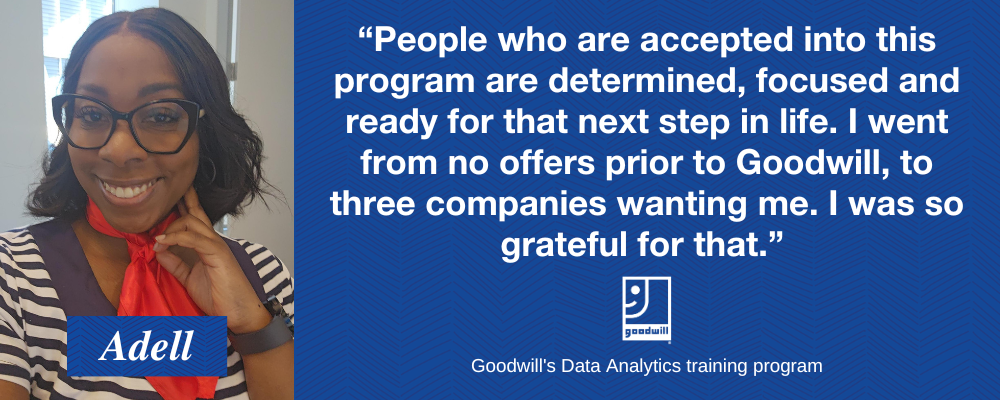 President Obama has said that 2014 is a “year of action,” and the Administration’s FY 2015 budget request proposes a host of initiatives aimed at employment and job training and represents a substantial commitment to helping people find and keep good jobs.
President Obama has said that 2014 is a “year of action,” and the Administration’s FY 2015 budget request proposes a host of initiatives aimed at employment and job training and represents a substantial commitment to helping people find and keep good jobs.
Below, we highlight priorities of particular interest to Goodwill. The GII public policy team will be hard at work on Capitol Hill in the upcoming weeks and months pressing for resources that will help our agencies perform their mission.
Service Members and Transition to Civilian Life
The president’s budget supports initiatives such as pre-separation counseling and employment workshops, and mandating compliance with a Career Readiness Standard before transition. It also provides targeted resources for wounded veterans in order to reduce disability evaluation processing time, ensure that recovering service members have active recovery plans and that those who transition to veteran status will have timely access to benefits.
Finally, the budget includes $33 million to continue the Integrated Disability Evaluation System (IDES) and VetSuccess on Campus initiatives. IDES and VetSuccess counselors ensure that veterans, especially wounded veterans and students, receive timely information about education opportunities, job counseling and placement. The budget also proposes $1 billion to create the Veterans Job Corps program that would put thousands of veterans back to work over the next five years.
Work Opportunities for Low- Income Parents
The Obama Administration proposes redirecting $602 million in annual Temporary Assistance for Needy Families (TANF) funding to a Pathways to Jobs initiative, which will support state partnerships with employers to provide subsidized job opportunities for low-income individuals.
Investments in Training and Employment Services
Included in the budget is more than $3 billion in formula grants to states and localities to provide training and employment services to more than 20 million Americans at 2,500 job centers across the country. The “Opportunity, Growth and Security” initiative would add another $750 million to restore prior cuts to these grants; increase the investment in innovation, evidence-based practices and performance in the workforce system; and provide additional funding for programs that serve populations with significant barriers to employment.
Creates New Pathways to Jobs and Careers
The budget proposes $1.5 billion to support a four-year, $6 billion Community College Job-Driven Training Fund that will offer competitive grants to partnerships of community colleges, public and nonprofit training entities, industry groups and employers to launch new training programs and apprenticeships. It also includes $2.5 billion in mandatory funding for Summer Jobs Plus, which will fund summer and year-round job opportunities for 600,000 youth as well as innovation grants aimed at improving skills and career options for disadvantaged youth.
Performance and Innovation
The proposal invests an amount equal to five percent of the Workforce Investment Act (WIA) formula grants in driving innovation and performance at the state and local level through. This includes $60 million in the Workforce Innovation Fund to support innovative state and regional approaches to service delivery; and $80 million for improved incentive grants to reward states that succeed through their WIA programs in serving workers with the greatest barriers to employment.
Unemployed Workers
$158 million in reemployment and eligibility assessments and reemployment services is also included under the budget. This investment will reach those who are most likely to exhaust their unemployment insurance (UI) benefits, as well as all recently separated veterans transitioning to civilian jobs.
The budget also provides $2 billion in mandatory funding to encourage states to adopt Bridge to Work programs, which would allow individuals to continue receiving their weekly UI check while participating in a short-term work placement and support other strategies for getting UI claimants back to work more quickly. In addition, it requests $4 billion in mandatory funding to support partnerships between businesses, education and training providers to train approximately one million long-term unemployed workers for new jobs.
Employment for People with Disabilities
The budget provides new authority and $400 million in new resources for the Social Security Administration (SSA), in partnership with other federal agencies, to test innovative strategies to help people with disabilities remain in the workforce. Early-intervention measures, such as supportive employment, targeted incentives for employers, and incentives and opportunities for states to better coordinate services, have the potential to achieve long-term gains.
Paul Seifert is a Senior Public Policy Specialist with Goodwill Industries International.







Join the Conversation